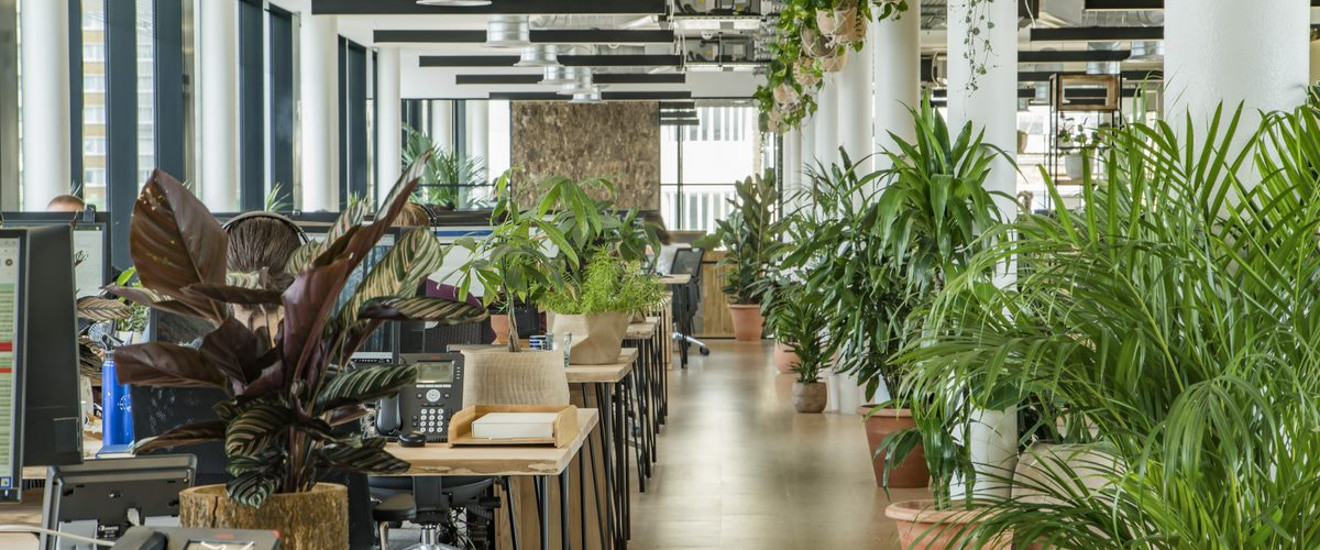The changing nature of wellbeing in the workplace

Wellbeing at work is no longer defined as the absence of sickness, but instead characterised by the things that enable employees to thrive. In this guest article, design journalist Katie Treggiden investigates the changing nature of workplace wellbeing.
Millennials make up an increasing amount of the global workforce. Despite being labelled ‘delicate snowflakes,’ this is a generation prepared to stand up for what they believe in and one of the things they feel passionate about is their right to healthy, productive, and empowering workplaces.
According to the building science centre BRE, 60% of staff in a typical UK office don’t have acceptable access to daylight (a problem less than 15% of 2016’s commercial fitouts addressed); more than 130 million days a year are lost to sickness at a cost of £100 billion to the economy; and almost a third of people don’t believe that the design of their workplace enables them to work productively.
If employers want to hire, engage and keep millennials – and increasingly the rest of their staff too – workplace wellbeing must be a priority.
Green buildings
With air quality ranking as one of millennials’ top concerns, environmental issues and personal wellbeing are increasingly intertwined. Reflecting this, the UK Green Buildings Council (UKGBC) focuses not only on issues like climate change, waste, and biodiversity, but also ‘health and wellbeing and quality of life.
’Green building benefits go beyond economics and the environment and have been shown to bring positive social impacts too,’ they say. ‘Many of these benefits are around the health and wellbeing of people who work in green offices.’
And they have the data to back that up: workers in well-ventilated workplaces report increases in cognitive function; employees in workplaces with windows sleep an average of 46 minutes more each night; and indoor air with lower concentrations of CO2 and pollutants improves performance.
The biophilic office
Workplaces aren’t just becoming environmentally greener, but internally too. It’s long been believed that plants improve air quality – ancient Egyptians and the people of Pompeii both brought plants into their homes. Now Curtis Gubb, a PhD student at the University of Reading, is attempting to prove it.
‘Biophilic integration in the workplace is a relatively new concept, however with scientific evidence signifying multi-faceted and numerous advantages, it is growing,’ he says. ‘Plants can deliver an array of benefits indoors, providing improvements in human health, building energy consumption, and productivity.’
Biophilic design is about more than just air quality – it’s about acknowledging our innate connection to the natural world. The term ‘biophilia’ was coined by social psychologist Eric Fromm in 1964 as a ‘love for humanity, nature, independence and freedom’ – and American biologist and researcher Edward O. Wilson expanded this in his 1984 book, Biophilia, to include the ‘urge to affiliate with other forms of life.’
‘The scientific evidence for the positive influence of biophilic design on the health and wellbeing of building occupants is substantial and growing,’ says BRE. ‘In an office environment this is shown as quantified improvements in productivity, wellness and a reduction in days absent due to illness.’
Social value
UKGBC’s mission not only covers the sustainability and wellbeing aims mentioned above, but also includes ‘long-term value for society’. This broad remit reflects a shift in the expectations of businesses.
‘Society is demanding that companies serve a social purpose,’ says Larry Fink, chairman and CEO of investment management company BlackRock. ‘To prosper over time, every company must not only deliver financial performance, but also show how it makes a positive contribution to all of its stakeholders, including shareholders, employees, customers, and the communities in which it operates.’
All of this means that workplace wellbeing now extends far beyond the workplace itself. It’s not just about a desk and a computer, but about how your workplace impacts the lives of local residents, amenities and community groups, and the local environment.

Start your workplace transformation today.
Your workplace holds enormous potential to improve your business performance. Get in touch today, and we will unlock that potential together.
